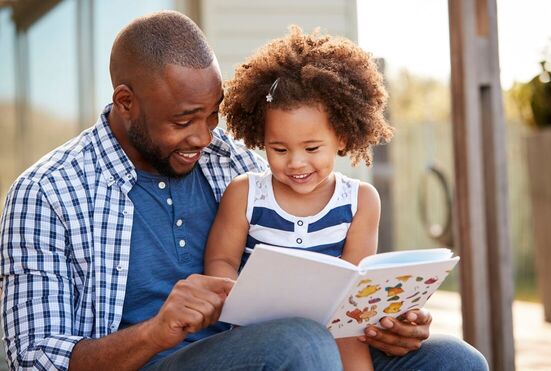|
Emergent literacy is a stage in early language development in which children learn skills that are important to the development of literacy (reading and writing) (Roth, Paul, & Pierotti, 2006). This period can be defined by development of phonological awareness skills, narrative knowledge, and an awareness of print in books, magazines, logos, street signs, grocery lists, etc. (Roth, Paul, & Pierotti, 2006). Phonological awareness is a meta-cognitive skill (i.e., an awareness/ability to think about one's own thinking) for the sound structures of language (Stanovich, 1994). Phonological awareness allows one to attend to, discriminate, remember, and manipulate sounds at the sentence, word, syllable, and phoneme (sound) level (Stanovich, 1994). These skills appear when rhyming, telling stories, scribbling, recognizing letters of the alphabet, and identifying signs and logos.
Talking, listening, and interacting with stories can help children develop the necessary comprehension skills for learning to read (Nelson, 2010). Emergent literacy skills can be targeted and practiced during daily routines and hands on activities. Reading books, singing repetitive songs and nursery rhymes, acting out scenes and scenarios in pretend play, pairing sounds with letters, and pointing out signs and logos are all great opportunities to engage with your child while developing emergent literacy skills. Emergent literacy skills to target during reading, story telling, and play:
Fun and engaging activities to try:
References: Nelson, N. (2010). Language and literacy disorders: Infancy through adolescence. Boston: Allyn & Bacon. Roth, F. P., Paul, D. R., Pierotti, A-M. (2006). Emergent literacy: Early reading and writing development. In Let’s talk:For people with special communication needs. Retrieved from https://www.asha.org/public/speech/emergent-literacy/ Stanovich, K. (1994). Phonological awareness. In Dyslexia and intervention. Retrieved from https://www.asha.org/public/speech/emergent-literacy/
0 Comments
Leave a Reply. |
A2 Therapy WorksMonthly tips, tricks, and activity ideas from our therapists! Archives
March 2022
Categories |


 RSS Feed
RSS Feed